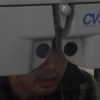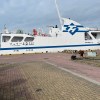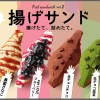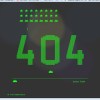Ever since the Great Tohoku Earthquake led to one of the worst nuclear disasters at the Fukushima Daiichi power plant people have been left with a lot of uncertainty. Information has not been coming from places of authority in a free and timely fashion. News broadcasts often tell stories of contaminated food and radioactive puddles near schools. Still, these stories are after the fact and often hard to process given the complex nature of radiation.
Luckily, on 27 December, Kyoto University Research Reactor Institute (KURRI) announced they are working with Fukushima Transportation Inc. to begin testing a system to monitor radiation in Fukushima City that is in real time and is accessible by anyone over the internet.
The system, named Kyoto University Radiation Mapping System or KURAMA, is ingeniously simple. First, equip buses with radiation detectors and GPS, and as they scour the city on their daily routes they can collect data from all corners of Fukushima City. The data will simultaneously be uploaded and displayed onto an online map for all to see.
If their experiment proves successful the system would most likely spread further and deeper around East Japan which in turn would provide even more accurate information. This may provide a slight but much sought after relief to the people by providing locations of so-called hotspots. Not only that, it could give researchers around the world some valuable insight to the behavior of radiation in these situations.
We applaud the efforts of KURRI and Fukushima Transportation and will continue to watch this story to report as soon as this system goes online.
Project KURAMA Info: GPS連動型放射線自動計測システム KURAMA (Japanese)

 New research suggests even low-level radiation in Fukushima negatively impacting wildlife
New research suggests even low-level radiation in Fukushima negatively impacting wildlife Fukushima bottled water wins Gold Quality Award in the internationally coveted Monde Selection
Fukushima bottled water wins Gold Quality Award in the internationally coveted Monde Selection First worker to die from Fukushima radiation exposure officially recognized by Japan’s government
First worker to die from Fukushima radiation exposure officially recognized by Japan’s government Japan government makes cute illustrated version of radioactive isotope it plans to dump into sea
Japan government makes cute illustrated version of radioactive isotope it plans to dump into sea Take a tour of the Fukushima Daiichi Nuclear Power Plant seven years after the disaster 【Video】
Take a tour of the Fukushima Daiichi Nuclear Power Plant seven years after the disaster 【Video】 Japanese ramen restaurants under pressure from new yen banknotes
Japanese ramen restaurants under pressure from new yen banknotes McDonald’s new Happy Meals offer up cute and practical Sanrio lifestyle goods
McDonald’s new Happy Meals offer up cute and practical Sanrio lifestyle goods French Fries Bread in Tokyo’s Shibuya becomes a hit on social media
French Fries Bread in Tokyo’s Shibuya becomes a hit on social media New private rooms on Tokaido Shinkansen change the way we travel from Tokyo to Kyoto
New private rooms on Tokaido Shinkansen change the way we travel from Tokyo to Kyoto Secret Kitchen bento serves Japanese flowers, birds, wind and moon in a box, but is it worth it?
Secret Kitchen bento serves Japanese flowers, birds, wind and moon in a box, but is it worth it? A trip to hell on Japan’s ‘vomit ship’: Is it as bad as everyone says it is?
A trip to hell on Japan’s ‘vomit ship’: Is it as bad as everyone says it is? We tried Korea’s way-too-big King Tonkatsu Burger at Lotteria 【Taste Test】
We tried Korea’s way-too-big King Tonkatsu Burger at Lotteria 【Taste Test】 Fried sandwiches arrive in Tokyo, become hot topic on social media
Fried sandwiches arrive in Tokyo, become hot topic on social media Fire away your frustration at ‘404 Not Found’ — Site turns error message into classic arcade game
Fire away your frustration at ‘404 Not Found’ — Site turns error message into classic arcade game Studio Ghibli releases new action figures featuring Nausicaä of the Valley of the Wind characters
Studio Ghibli releases new action figures featuring Nausicaä of the Valley of the Wind characters All-you-can-drink Starbucks and amazing views part of Tokyo’s new 170 meter-high sky lounge
All-you-can-drink Starbucks and amazing views part of Tokyo’s new 170 meter-high sky lounge More foreign tourists than ever before in history visited Japan last month
More foreign tourists than ever before in history visited Japan last month Starbucks reopens at Shibuya Scramble Crossing with new look and design concept
Starbucks reopens at Shibuya Scramble Crossing with new look and design concept Studio Ghibli glasses cases let anime characters keep an eye on your spectacles
Studio Ghibli glasses cases let anime characters keep an eye on your spectacles Is the new Shinkansen Train Desk ticket worth it?
Is the new Shinkansen Train Desk ticket worth it? Beautiful Ghibli sealing wax kits let you create accessories and elegant letter decorations【Pics】
Beautiful Ghibli sealing wax kits let you create accessories and elegant letter decorations【Pics】 Studio Ghibli releases Kiki’s Delivery Service chocolate cake pouches in Japan
Studio Ghibli releases Kiki’s Delivery Service chocolate cake pouches in Japan New definition of “Japanese whiskey” goes into effect to prevent fakes from fooling overseas buyers
New definition of “Japanese whiskey” goes into effect to prevent fakes from fooling overseas buyers Our Japanese reporter visits Costco in the U.S., finds super American and very Japanese things
Our Japanese reporter visits Costco in the U.S., finds super American and very Japanese things Studio Ghibli unveils Mother’s Day gift set that captures the love in My Neighbour Totoro
Studio Ghibli unveils Mother’s Day gift set that captures the love in My Neighbour Totoro Domino’s Japan now sells…pizza ears?
Domino’s Japan now sells…pizza ears? New Japanese KitKat flavour stars Sanrio characters, including Hello Kitty
New Japanese KitKat flavour stars Sanrio characters, including Hello Kitty New Pokémon cakes let you eat your way through Pikachu and all the Eevee evolutions
New Pokémon cakes let you eat your way through Pikachu and all the Eevee evolutions Sales of Japan’s most convenient train ticket/shopping payment cards suspended indefinitely
Sales of Japan’s most convenient train ticket/shopping payment cards suspended indefinitely Sold-out Studio Ghibli desktop humidifiers are back so Totoro can help you through the dry season
Sold-out Studio Ghibli desktop humidifiers are back so Totoro can help you through the dry season Japanese government to make first change to romanization spelling rules since the 1950s
Japanese government to make first change to romanization spelling rules since the 1950s Ghibli founders Toshio Suzuki and Hayao Miyazaki contribute to Japanese whisky Totoro label design
Ghibli founders Toshio Suzuki and Hayao Miyazaki contribute to Japanese whisky Totoro label design Doraemon found buried at sea as scene from 1993 anime becomes real life【Photos】
Doraemon found buried at sea as scene from 1993 anime becomes real life【Photos】 Tokyo’s most famous Starbucks is closed
Tokyo’s most famous Starbucks is closed One Piece characters’ nationalities revealed, but fans have mixed opinions
One Piece characters’ nationalities revealed, but fans have mixed opinions We asked a Uniqlo employee what four things we should buy and their suggestions didn’t disappoint
We asked a Uniqlo employee what four things we should buy and their suggestions didn’t disappoint Princesses, fruits, and blacksmiths: Study reveals the 30 most unusual family names in Japan
Princesses, fruits, and blacksmiths: Study reveals the 30 most unusual family names in Japan TEPCO in hot water for use of tasteless hashtag in recent tweet about Fukushima Nuclear Plant
TEPCO in hot water for use of tasteless hashtag in recent tweet about Fukushima Nuclear Plant U.S. military personnel launch US$5 billion lawsuit against Tokyo Electrical Power Company
U.S. military personnel launch US$5 billion lawsuit against Tokyo Electrical Power Company Discovery of unregistered radioactive substance in Japanese university shocks students
Discovery of unregistered radioactive substance in Japanese university shocks students Seven years after earthquake, Fukushima teen says March 11 is an “ordinary day” in the prefecture
Seven years after earthquake, Fukushima teen says March 11 is an “ordinary day” in the prefecture New species of mayfly discovered in Fukushima that can never get their prescription glasses
New species of mayfly discovered in Fukushima that can never get their prescription glasses Common ramen ingredient found highly effective at clearing up radioactive contamination
Common ramen ingredient found highly effective at clearing up radioactive contamination Geminoid F: Japan’s android actress with a starring role in a new film 【Video】
Geminoid F: Japan’s android actress with a starring role in a new film 【Video】 Japanese Americans tell STORIES FROM TOHOKU
Japanese Americans tell STORIES FROM TOHOKU Crazy Kyoto train will have a giant lens motif taking up its entire front end
Crazy Kyoto train will have a giant lens motif taking up its entire front end Don’t forget: Yahoo! Japan to make disaster relief donation for every person who searches for “3.11” today
Don’t forget: Yahoo! Japan to make disaster relief donation for every person who searches for “3.11” today 17 Mind-Blowing Facts About Russia
17 Mind-Blowing Facts About Russia Kyoto wants to add extra charges for tourists to use city buses
Kyoto wants to add extra charges for tourists to use city buses Tokyo’s 7 coolest public art pieces
Tokyo’s 7 coolest public art pieces Haruki Murakami’s solution to the nuclear power debate in Japan: Actually call it “nuclear power”
Haruki Murakami’s solution to the nuclear power debate in Japan: Actually call it “nuclear power” New self-driving buses testing across Japan let you pay with your face
New self-driving buses testing across Japan let you pay with your face
Leave a Reply